
By Caroline Mays
St. Agnes Library, a branch of The New York Public Library, at 444 Amsterdam Avenue near 81st Street, owes its existence to an unlikely pair of library enthusiasts: Andrew Carnegie, the industrialist and philanthropist; and Rev. Dr. Edward A. Bradley, a hard-working Episcopalian priest on the Upper West Side.
Andrew Carnegie started working toward free public libraries for Americans at least as early as the 1850s, when he was a teenager and the use of many libraries required subscriptions. As a 17-year-old, he worked as a “bobbin boy” in a Pennsylvania textile mill. The town of Allegheny, PA, had a typical subscription library, which was open to apprentices but not bobbin boys. Because Carnegie could not afford the subscription, he petitioned for use of the library. When he was refused, he went on to publish his petition in The Pittsburgh Dispatch, a leading Pittsburgh newspaper at the time. The library would not open for free to the public, but did expand access to Carnegie and other workers at the textile mill. Of this incident, Carnegie went on to write that the “treasures of the world which books contain were opened to me at the right moment.”
Forty years later on the Upper West Side, Rev. Dr. Bradley was similarly dedicated to the idea of public libraries, though rather than donating millions, he gave his time.
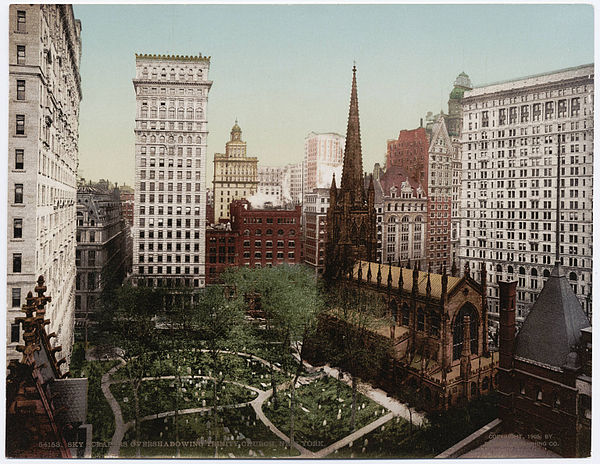
In 1888, the Trinity Corporation, of Trinity Church on 89 Broadway and Wall Street, planned to build a church, parish house, and clergy house on 121-147 West 91st Street, between Amsterdam and Columbus avenues. At this time, the prescient parish priest, Rev. Dr. Bradley, saw the need for a library on the Upper West Side, so one was built as part of the parish campus.
Chief reference librarian Harry Miller Lydenberg wrote in his book, called History of the New York Public Library: Astor, Lenox, and Tilden Foundations: “At that day there was no public library nearer than the George Bruce of the New York Free Circulating Library at 226 West 42nd Street to the south and the Harlem branch of that Library at 1943 Madison Avenue, near 125th Street, to the north.” And unfortunately, the Harlem library on 125th Street was then “restricted to members or subscribers.”
When St. Agnes Episcopal Church opened in 1893, Rev. Dr. Bradley ran both it and its library with equal devotion. In fact, Lydenberg wrote that “the demand for books was so great that by the end of the year Dr. Bradley was emboldened to expand his field from his parish to the neighborhood and community.” Once the library was open to the public in 1894, it grew quickly: by 1895, it had grown to 2,000 volumes. During this time, it also housed books in braille for blind readers.

The library’s increasing size necessitated several moves within the neighborhood, from 526 Amsterdam Avenue, to 85th and Amsterdam, and to 82nd and Broadway. Rev. Dr. Bradley was “keenly distressed” by these moves, because he felt he could not properly look after the library when it was not attached to the parish. Unfortunately, he died suddenly in 1898. In 1901, the library was consolidated with The New York Public Library, and moved a few more times.
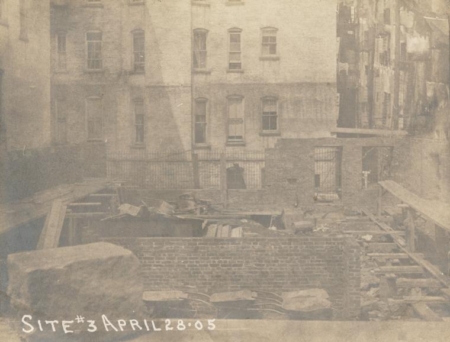
In 1906, Carnegie was on a roll: he had been giving his fortune away to libraries for twenty years. Thus, like many neighborhood libraries of this era, St. Agnes Library’s permanent move to 444 Amsterdam Avenue and West 82nd Street was funded by a Carnegie grant. By the time Carnegie died, he would have donated $60 million for 1,689 new libraries across the U.S., and a thousand more throughout Europe, Africa, Asia, and Oceania.

The St. Agnes Library building was designed by the New York City architectural firm originally comprising George Fletcher Babb, Walter Cook, and Daniel W. Willard. This firm was a favorite of Carnegie’s, who hired them in 1902 to build his mansion on 2 East 91st Street, which is now the Cooper-Hewitt Museum. According to Phillip James Dodd, architect and writer of “An American Renaissance: Beaux-Arts Architecture in New York City,” one of Carnegie’s stipulations was that he would donate to the New York Public Library if he could choose the architects for the new branches. His other stipulation was that the library had to purchase the plot of land; he would only pay for building costs. They came to a compromise regarding the architects, agreeing that a panel of architects would design the libraries. Carnegie insisted that Babb, Cook & Willard be included. In the early 1900s, Babb, Cook & Willard were not considered to be part of the elite architects of the day. Dodd described them as “ham-fisted” and not the most “subtle” or “sophisticated.” But in the end, Dodd said, Carnegie’s favorites were included on the panel and the firms “pretty much divvied up all of the 65 branches amongst themselves.”

Many of the libraries built with Carnegie’s donations, including St. Agnes, look similar by design—and not just because they are all built in the Beaux-Arts style popular in the late 1800s and early 1900s. Most Carnegie libraries are located in the middle of a block because, Dodd explained, the library was buying plots of land, and middle-block plots were cheaper. The architecture firms “weren’t able to be too creative, if that makes sense, because they were following a kind of set of rules,” Dodd said. The uniform design was intentional because the individual buildings “would be recognizable as a branch of The New York Public Library,” said Dodd, comparing this brand consistency to a modern-day McDonald’s.

The St. Agnes library is built of limestone and features three rows of windows with decorative surrounds. The two bottom rows are rounded, while the top set of windows are square. Dodd explained that the middle row of windows “tended to be the most elaborate” because this style was inspired by Italian palazzos, and “within Italian palazzos, the principal floor was the second floor.” Above the uppermost windows, “New York Public Library” is engraved on the façade. At the top, Dodd described the building as having an entablature, or a horizontal molding that’s held up by short columns. Finally, at the very top is the decorative railing on the roof, which is called a balustrade.
The 96th Street Library at 222 East 96th Street, and the Yorkville Library at 222 East 79th Street are both libraries built by Babb, Cook & Willard in the same style. Wikipedia has a list of Carnegie libraries in New York, with photos, that clearly shows how similar the libraries are.
To receive WSR’s free email newsletter, click here.



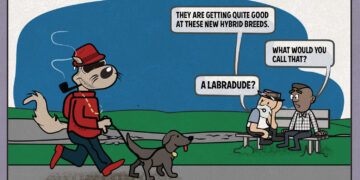
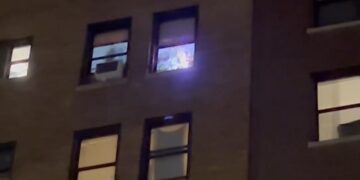
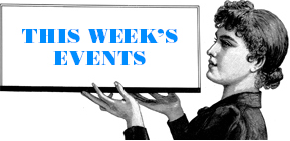



Who designed the library on West 100th St. between Broadway and Amsterdam which is now owned by the Ukrainian Academy of Arts and Sciences? It has been used for movie shoots so it must have a dignified interior, but I have only seen it through the windows. Maybe tge Ukrainians will open it to tge public for exhibitions or events and use the proceeds to help war-torn homeland.
WSR already has you covered!
https://www.westsiderag.com/2011/09/22/preserving-ukrainian-history-in-a-classic-upper-west-side-building
It’s certainly an intriguing building to walk by, isn’t it?
James Brown Lord was the architect.
https://www.landmarkwest.org/building/206-west-100th-street-new-york-free-circulating-library-now-the-ukrainian-academy-of-arts-sciences/
Fascinating history – thank you for posting this!
This library is a gem that my family has enjoyed for years.
I wish more of today’s billionaires were as philanthropic as Carnegie was. He was able to enjoy a very nice lifestyle while also using his money for the public good. Libraries are a cherished resource for everyone.
Thank you for this article. I’ve been using the St. Agnes branch regularly since moving to the UWS in 1987. I would like to see more of my tax dollars go to NYPL and all its branches.
Nice work! The picture of the Trinity site downtown is particularly striking, for what’s already there and what’s not yet.
Thank you so much for posting this article. St. Agnes was a place of refuge when I arrived to the UWS on 85th St. and went to school at PS9 then William J. O’Shea JHS. I still remember where I sat to read books that took me away to far away places and adventures. Also very touched that my Episcopal Church was one of the conduits that built it . Blessings!
Thank you for sharing!
A very interesting article. I had often wondered where the name of the St. Agnes library came from. A further question would be, what happened to the St. Agnes Episcopal Church: as far as I know, it no longer exists among the Episcopal churches on the UWS.
It was torn down and replaced by a Trinity School building in the 1940s.
Thank you for this interesting history of my neighborhood library!
Ver nice to know the history of my favorite library. Thanks. Any news of when their book sales will resume?
Their book sales occur about once a month. Check the NYPL calendar for info on the next one — August 30.
https://www.nypl.org/events/calendar?keyword=book+sale&target%5B%5D=ad&target%5B%5D=ya&target%5B%5D=cr&city%5B%5D=bx&city%5B%5D=man&city%5B%5D=si&date_op=GREATER_EQUAL&date1=08%2F25%2F2023&location=&type=&topic=&audience=&series=
Thank you for a wonderful article! I’ve looked at that library so many times. Love the photo of the construction site. It’s very moving to witness the monumental civic architecture of that era — beautiful buildings for the people.
Yes, WSR covered the story of the former library on West 100th Street between Broadway and Amsterdam…………..12 years ago! The caretaker was 91 years old then. What’s going on there NOW?
Thank you for this article. This branch was my first experience of a library…my grandmother took me in and got me a library card when I was 6. Her love of books inspired me from the beginning and I spent many wonderful hours in this branch as a child…a very long time ago (60 years….). It’s nice to read more about the history and architecture.
Wonderful article about my favorite library branch. When I returned to New York from living on the West Coast the first thing I did was go-to St. Agnes to get a library card.
Excellent article. I’ve known about Andrew Carnegie’s involvement in building public libraries, but not the detail provided here. Also, when I used to live on the UWS and went to St. James on the corner of Amsterdam and 81st, I’d admire the library. Having the background makes me like it even more. Stories like these and of course Pupper Westside & West Side Mews are the reason I look forward to the Westside Rag!
The Upper West Side needs a library open on Sundays. Unfortunately the union representing librarians negotiated 2X pay f or Sunday work, There is not enough money in the budget for this perk. Hence no Sunday service.